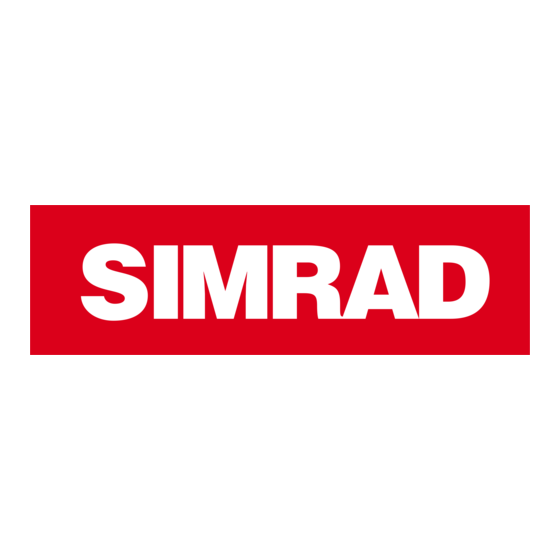
Advertisement
Table of Contents
EM Technical Note
Date:
January 7th, 2000
Author:
Erik Hammerstad
Subject:
Backscattering and Seabed Image Reflectivity
1. Introduction
The Simrad EM multibeam echo sounders all have beam backscattering strengths and optionally seabed
image reflectivity as part of their data output. These data may be used for bottom classification, provided
that how the data is collected and processed is clearly defined. This note will describe how this is done in
the Simrad multibeam echo sounders. It will also show what corrections may be made in postprocessing
these data to remove the bathymetry dependent part of the data. Finally a comparison will be made with
ordinary sidescan sonars and some other multibeam echo sounders having imagery output.
2. Theory
The echo level, EL, of the signal backscattered from the bottom, may be derived from the sonar
equation:
Here SL is the multibeam echo sounder's source level, 2TL is the two-way transmission loss, and BTS
the bottom target strength. The transmission loss consists of two parts, one due to spherical spreading of
the signal, the other due to absorption loss in the water:
Here R is the range and
The bottom target strength will depend both on the reflective property of the seabed, but also on the
extent of the bottom which contributes to the backscattered signal at any time. It is therefore usual to
define a bottom backscattering coefficient, BS, given in dB/m
bottom reflectivity. The backscattering area will be bounded by the beam geometry, as defined by
, at normal incidence (0 incidence angle or 90 grazing angle) while in other directions it will be
y
bounded by the alongtrack beamwidth,
EL = SL - 2TL + BTS
2TL = 2 R+ 40
the absorption coefficient in dB/m.
, and the transmit pulse length, .
x
BTS = BS + 10
BTS = BS + 10
log
log
R
2
, as the characterizing quantity for the
log
R for = 0
2
x
y
c
R for
x
2
sin
- 1 -
> 0
and
x
Advertisement
Table of Contents

Summary of Contents for Simrad EM - TECHNICAL NOTE 2000
- Page 1 This note will describe how this is done in the Simrad multibeam echo sounders. It will also show what corrections may be made in postprocessing these data to remove the bathymetry dependent part of the data. Finally a comparison will be made with ordinary sidescan sonars and some other multibeam echo sounders having imagery output.
- Page 2 How the backscattering coefficient varies with incidence angle, , is of course an important part of seabed characterization and in determining the type of material which is on the seabed surface. The receivers of the multibeams have limited dynamic range and a time variable gain (TVG) is therefore run during the ping to avoid overload or having the echo return buried in noise.
- Page 3 The TVG law run in the Simrad multibeam echo sounders is based upon the above model with a fixed crossover angle between the two regions of 25 . 1) Based on previous pings, the range to normal incidence, R , and the backscattering coefficients at...
- Page 4 For seabed classification it seems reasonable to assume that the beam backscatter coefficients will be sufficient, especially when equidistant beam spacing is used. As all incident angle dependence and backscattering level assumptions have been removed from this data, the only parameter used in the real- time calculations which may need to be corrected is the scattering area which will not be correct if the bottom is not really flat.
- Page 5 Simrad systems are quite good in this regard. Other multibeam echo sounders (Seabeam, Atlas) are also to some extent capable of providing imagery data.












Need help?
Do you have a question about the EM - TECHNICAL NOTE 2000 and is the answer not in the manual?
Questions and answers